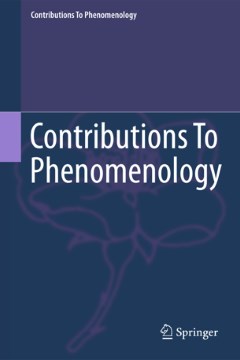What does noematic intentionality tell us about the ontological status of the noema?
pp. 137-155
Abstrakt
Through past experience with Husserl's phenomenology, I have arrived at a certain view of "the noema" that I share with a number of other interpreters.1 Thus I believe that it is crucial for an understanding of "the phenomenology of the noema" not to waver in one's conviction that the topic must be seen in the light of the change of attitude towards objects (things, events, etc.; in short, the world) that occurs when we are doing phenomenology. Accordingly, it has for a long time seemed right to me to argue in defence of the ontological identity of the noema and the corresponding object simpliciter, provided that one consistently takes into account the difference between one's stance towards the object in question in doing phenomenology and one's stance in living in the pre-phenomenological attitude.
Publication details
Published in:
Drummond John, Embree Lester (1992) The phenomenology of the noema. Dordrecht, Kluwer.
Seiten: 137-155
DOI: 10.1007/978-94-017-3425-7_9
Referenz:
Marbach Eduard (1992) „What does noematic intentionality tell us about the ontological status of the noema?“, In: J. Drummond & L. Embree (eds.), The phenomenology of the noema, Dordrecht, Kluwer, 137–155.




